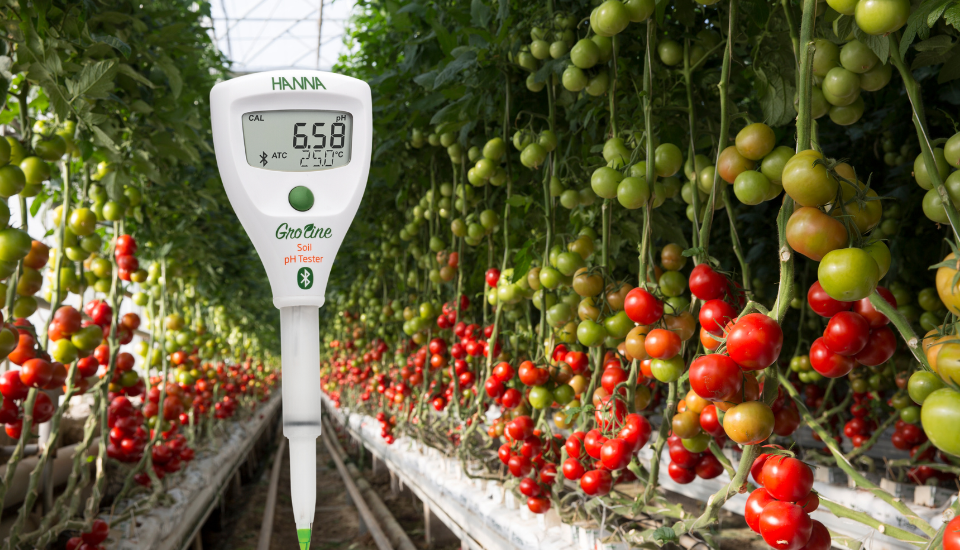When it comes to growing crops, pH levels are vital. The pH level of soil, water, and nutrient solution can have a significant impact on your plant growth, nutrient availability, and overall crop yield. In this article, we will explore why pH levels are so crucial when growing food, how to test and adjust pH levels, and the benefits of maintaining optimal pH levels for plant growth.
What is pH?
pH is a measure of the acidity or alkalinity of a solution, with a range from 0 to 14. A pH of 7 is considered neutral, while values below 7 are acidic, and values above 7 are alkaline or basic. pH levels are important because they affect the chemical and biological processes that occur in soil and plant roots.
Why are pH levels important when growing food?
1. Nutrient availability
The pH level of the soil, water, or nutrient solution can affect the availability of nutrients to the plants. Each plant has a preferred pH range for optimal growth and nutrient uptake. For example, most vegetables and fruits grow best in soil with a pH range of 6.0 to 7.0. If the pH is too high or too low, some nutrients, such as nitrogen, phosphorus, and potassium, may become unavailable to the plants. This can lead to stunted growth and nutrient deficiencies.
2. Microbial activity
The pH level of the soil also affects the activity of microorganisms in the soil, such as bacteria, fungi, and bugs. These microorganisms play a crucial role in breaking down organic matter and releasing nutrients for plant uptake. However, their activity is influenced by the pH level of the soil. For example, some bacteria and fungi prefer acidic soil, while others prefer alkaline soil. If the pH is not in the range suitable for their growth, microbial activity may be hindered, and the soil’s fertility can be affected.
3. Pesticide efficacy
The pH level of the water used to mix pesticides can affect their efficacy. Pesticides work best in water with a neutral pH of 7. If the water is too acidic or alkaline, the effectiveness of the pesticide may be reduced. This can lead to increased pesticide use, which can be harmful to the environment and human health.
How to test pH levels?
There are several ways to test soil pH levels, depending on the type of solution you want to test. For soil, you can use pH testers or pH test kits. For water or nutrient solutions, you can use pH test strips, a pH pen, or a waterproof pH tester. The testing process is straightforward and can be done at home with pH testers supplied by HANNA INSTRUMENTS.
How to adjust pH levels?
If the pH level is too high or too low, you can adjust it by adding amendments to the soil or nutrient solution. For example, if the pH of the soil is too acidic, you can add lime to raise the pH. If the pH is too alkaline, you can add sulfur or organic matter to lower the pH. Similarly, if the pH of the nutrient solution is too high or low, you can add pH-adjusting chemicals to bring it to the desired level.
1. Improved nutrient availability
One of the primary benefits of maintaining optimal pH levels for plant growth is that it improves the availability of essential nutrients. Each plant species has a specific pH range in which it grows optimally, and when the pH level is outside of this range, nutrients can become unavailable to the plant.
2. Disease resistance
Maintaining optimal pH levels can help plants build resistance to diseases and pests. Soil pH influences the microbial community in the soil, and some microorganisms are beneficial for plants. For example, some bacteria help fix nitrogen. Proper pH levels help maintain a balanced microbial community, reducing the risk of diseases and pests.
3. Water uptake
pH levels influence water availability in the soil. At low pH levels, the soil becomes more acidic, reducing the soil’s ability to retain water. At high pH levels, the soil becomes alkaline, which can cause waterlogging and reduce oxygen availability to the roots.
4. Enhanced growth and yield
Perfect pH levels enable plants to take up essential nutrients and water, leading to healthy growth and higher yield. Plants that are not grown in an optimal pH environment can experience lower yields, and poor-quality produce.







